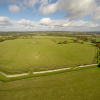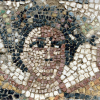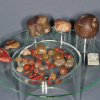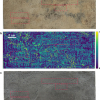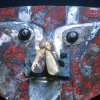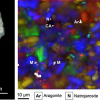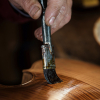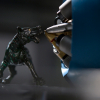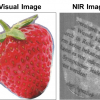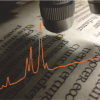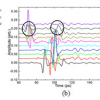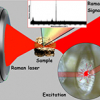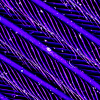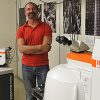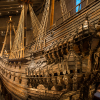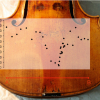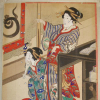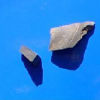Focus on Cultural Heritage
Imaging enables screening of samples to be submitted to 14-C dating.
Hyperspectral imaging (HSI) is gaining wide acceptance as one of the most valuable optical tools for art archiving and restoration. As a non-invasive and non-destructive imaging technique, HSI is safe for even the most fragile samples.
This article describes how gamma-ray spectroscopy can reveal new features in buried archaeological sites. In her case at the Roman settlement of Silchester in Hampshire, UK, and other sites.
ICP-MS of glass tesserae from a villa from late antiquity indicates that some were made from recycled glass, as well as which elements were used for colouring.
Anne Brontë is renowned as a novelist, but a Raman analysis of her collection of stones has revealed her to be a skilled collector with an active interest in geology who accumulated a collection of attractive specimens before her death aged 29 in 1849.
Terahertz imaging and signal processing techniques to look beneath the corroded surface of a 16th-century lead funerary cross.
FT-IR spectroscopy and tandem mass spectrometry have identified human blood and bird egg proteins in red paint covering a 1000-year-old gold mask from Peru.
As a UvA professor, she will focus primarily on the application of molecular spectroscopy for the study of historic paints and their degradation.
Raman microscopy has been used to reconstruct technical process parameters and the origin of the raw materials of Egyptian blue revealing trace compounds that inform us about its history.
Non-invasive insight of gilded paint samples using infrared microscopy accessory.
Multi-spectroscopy analytical approach provides important information for preservation of Picasso paintings.
Cultural heritage is a growing application area for spectroscopy, and our second article describes how infrared and X-ray spectroscopy are being used to explore the coatings used by the old Cremonese makers that produced such outstanding sound.
New atomic spectroscopy analyses reveal the origin of Stonehenge’s giant sarsen stones as West Woods on the edge of Wiltshire’s Marlborough Downs, about 15 miles to the north.
AGLAÉ is the only particle accelerator in the world dedicated to studying heritage objects. Now improvements in automation and detector sensitivity have been introduced.
We all know how spectroscopy and other analytical technologies have played important roles in detecting fraud and in authentication. Paper collages, or photomontages, are part of the art market that is seeing much interest amongst collectors. It is difficult to detect forgeries just through expertise. The use of NIR imaging offers a number of ways to identify forgeries or authenticate the collage non-destructively; from determining the glue used to the revealing of printing on the back of the pieces or paper, which often have been taken from books and magazines.
It is not every issue that one of our articles starts with a quotation in medieval English, and it is appropriate as two of our articles cover the use of spectroscopy in cultural heritage. This is yet another field where the rich information provided by spectroscopy, along with its non-destructive nature (for many techniques), portability and ability to generate chemical images make it the answer to many questions. Kate Nicholson, Andrew Beeby and Richard Gameson are responsible for the medieval English at the start of their article “Shedding light on medieval manuscripts”. They describe the general use of Raman spectroscopy for the analysis of historical artefacts, and, in particular, their work on medieval European manuscripts and 18th century watercolour pigments. They stess the importance of checking the actual laser power density to avoid damage to priceless artefacts.
Terahertz spectroscopy and imaging of Paleolithic cave etchings, 14th century paintings in a church and a mid-20th century Italian painting are all described. This helps demonstrate the versatility of the technique as well as its potential in cultural heritage preservation.
This article looks at the use of Raman and XRF spectroscopies to investigate the different deterioration processes caused by marine aerosols. These techniques can detect the decay compounds and the original composition of the different materials from historical buildings close to the sea, which can then be used to explain the reactions that take place on them. This helps in the development of remedial actions and preventive conservation strategies for historical buildings.
Terahertz imaging technology has the potential to help conservationists and academics better understand the history behind cultural artefacts.
Stanislav Strekopytov tells us about “The use of inductively coupled plasma mass spectrometry to quantify chemical hazards in natural history collections: arsenic and mercury in taxidermy bird specimens”. It is quite shocking to learn about the use of poisons to preserve taxidermy specimens in the past. Nowadays it is essential that the dangers from such specimens are known before they can be handled by museum staff and particularly if they might be touched by visitors. ICP-MS analysis provides fully quantitative information on bulk contents of toxic elements in taxidermy specimens and so is well suited to this task.
Scientists at Loughborough University hope their early trials of a new technique based on LIBS could assist a crackdown on stone theft.
UCLA, USA, are combining Raman microscopy with scanning electron microscopy (SEM) to study archaeological textiles and fibres.
Synchrotron X-ray imaging of rocks is heping to save papers of the past.
The ravages of time have severely damaged the wall and ceiling frescos in the upper cloister of Brandenburg Cathedral.
Sampling on important works of art is not possible and this is the main reason why only non-invasive techniques, such as MSI, are becoming increasingly popular to assist with undertaking conservation decisions.
Yvonne Fors, Håkan Grudd, Anders Rindby and Lennart Bornmalm tell us about “X-ray fluorescence for cultural heritage: scanning biochemical fingerprints in archaeological shipwrecks”. Two outstanding examples of the preservation of wood are the warships Vasa, in Stockholm and the Mary Rose in Portsmouth and this article looks at the role XRF has played in the preservation of the wood of both ships.
It is important that places of archaeological and architectural importance need to be explored without damage. Atomic Dielectric Resonance (ADR) can be used for identifying sub-surface geological features. This technology1 uses a novel coherent beam, which has been used in the oil, gas and water industries, to provide information on what lies beneath the earth’s surface, without the need to drill cores.
“Spectral database for postage stamps by means of FT-IR spectroscopy” by Eleonora Imperio, Gabriele Giancane and Ludovico Valli will be of great interest. As well as helping to detect forgeries, FT-IR has been used to create a database which also charts the history of the technology used to create stamps. Quite rightly, they are considered by many to be works of art.
Nati Salvadó, Salvador Butí and Trinitat Pradell have used a number of techniques to investigate changes in pictorial techniques in Catalan paintings in the 15th century. The combination of different techniques is of particular value. The use of synchtrotron radiation as a light source is also an advantage.
Jean-Philippe Echarda and Loïc Bertrandb
aLaboratoire de recherche et de restauration, Musée de la musique, Cité de la musique, 221 avenue Jean Jaurès, 75019 Paris, France. E-mail: [email protected]
bIPANEMA, synchrotron SOLEIL, Saint-Aubin, 91192 Gif-sur-Yvette cedex, France
Scientific studies of artworks are an important practice in many institutions dedicated to the study and protection of cultural heritage. Applied physics and chemistry provide the scientific data necessary to characterise and understand the origin, the degradation processes and the environment in which the artwork was created or has existed.
Our laboratory has received several requests from public or private institutions to solve problems related to conservation and restoration of samples from cultural heritage. A brief description of the FT-IR methodologies used to solve some of them are detailed within this article.
The study of the mineralogical phases of archaeological ceramics may be very helpful in unravelling the history of an ancient sherd, particularly by means that investigate the process of its production. Micro-Raman spectroscopy offers advantages as a non-destructive, or even better, a non-sampling technique.



